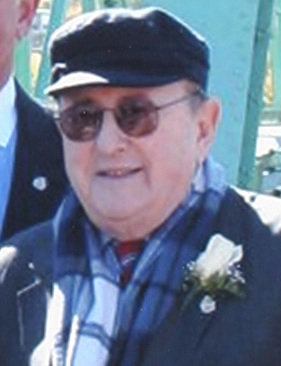Citation:
National EMS Museum People Files, NEMSM-0003 [Please include Folder/Person’s Name]
Dr. Bernard Lown
(1921-2021)
Bernard Lown was born on June 7, 1921 in Utena, Lithuania. He immigrated to the United States as a boy, and said that had he “remained in Europe for two more years [he] would not have survived.” After moving to Lewiston, Maine in 1935 he eventually attended the University of Maine where he graduated with a bachelor’s degree in zoology. He then attended Johns Hopkins University, where he became known for being an advocate for racial justice; he was suspended multiple times for going against the segregationist policies at JHU (Lown Institute).
Lown is best known for being the original developer of the direct current defibrillator, also known as the cardioverter, in 1962, and he also introduced Lidocaine as a means to control heartbeat disturbances. Truly an EMS innovator, Lown focused on sudden cardiac death and psychological stress on the cardiovascular system. His work contributed to the development of the coronary care unit, and by refusing to patent the direct current defibrillator, Lown’s defibrillator could be more easily accessible therefore saving thousands of lives across the world.
Lown’s contributions to the field of cardiology are invaluable and include the encouragement of movement over complete bed-rest post-myocardial infarction, the introduction of the precordial thump used to reverse ventricular tachycardia, and establishing one of the first Coronary Care Units (at Peter Brigham Hospital in Boston, Massachusetts). This CCU became a model that other hospitals would adapt. Equally as important as his contributions to the field of cardiology, is his activism and philanthropy. Lown founded the Lown Cardiovascular Research Foundation in order to promote worldwide cardiovascular health. Additionally, as one of the founders of International Physicians for the Prevention of Nuclear War, Lown accepted the Nobel Peace Prize with co-founder Dr. Evgeny Chazov in 1985 on behalf of the organization for its work in mobilizing over 100,000 physicians to support nuclear disarmament. Then in 1987, Lown founded SatelLife, which allowed health care professionals in developing countries to access medical literature they would not have been able to otherwise.
Lown was also a prolific author and his 1996 book, The Lost Art of Healing was among his most well-known works. He also published a memoir about his work towards nuclear disarmament, Prescription for Survival, in 2008. These contributions seem to barely begin to scratch the surface of Lown’s contributions to the field in both innovation, research, awards won, organizations founded, and people helped. Lown lived a full life and helped countless people around the world; he passed away at age 99 on February 16, 2021.
National EMS Museum Resources
Additional Resources
Additional information on Dr. Bernard Lown’s life and accomplishments:

